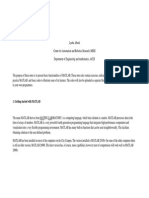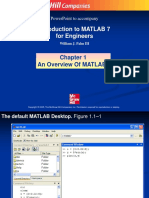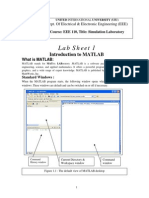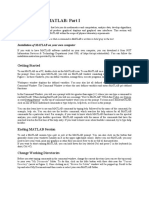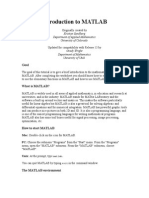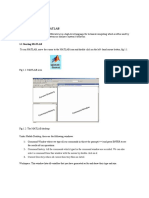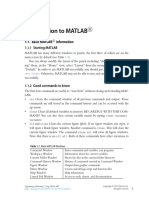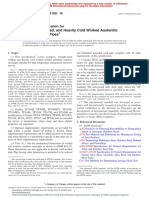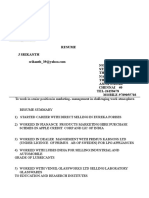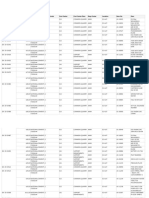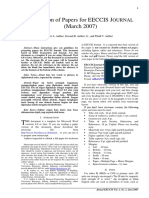0% found this document useful (0 votes)
77 views39 pagesMATLAB Basics and Commands Guide
Here are the solutions to the problems:
1) The number of elements in y is 21. The value of the third element is -7.
2) The number of elements is 41.
1) The 10th element is -0.9498.
2) The new array is [-0.9 -0.85 -0.8 -0.75 -0.7].
3) The sum of the first three elements of the new array is -2.55.
Uploaded by
Kute LuciferCopyright
© © All Rights Reserved
We take content rights seriously. If you suspect this is your content, claim it here.
Available Formats
Download as PDF, TXT or read online on Scribd
0% found this document useful (0 votes)
77 views39 pagesMATLAB Basics and Commands Guide
Here are the solutions to the problems:
1) The number of elements in y is 21. The value of the third element is -7.
2) The number of elements is 41.
1) The 10th element is -0.9498.
2) The new array is [-0.9 -0.85 -0.8 -0.75 -0.7].
3) The sum of the first three elements of the new array is -2.55.
Uploaded by
Kute LuciferCopyright
© © All Rights Reserved
We take content rights seriously. If you suspect this is your content, claim it here.
Available Formats
Download as PDF, TXT or read online on Scribd
/ 39

